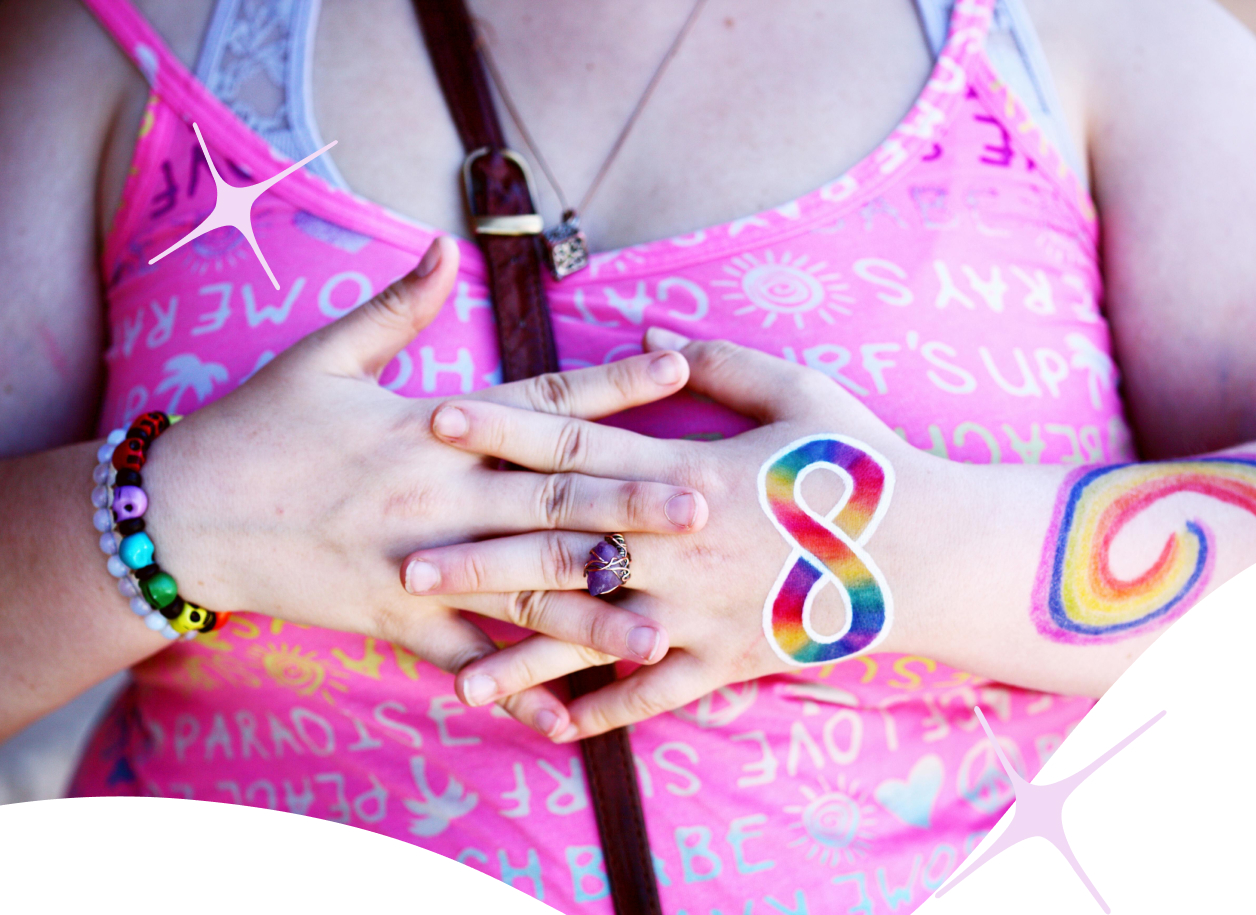Asexuality is often misunderstood by society. Asexual people can be attracted to others and even have sex. What else does asexuality entail? Let’s find out together.

What is asexuality?
Asexuality is a sexual orientation. Its main characteristic is that asexual individuals do not have sexual desire and drive towards other people. While having little to no need to have sex, asexuals may still engage in sexual activities and have orgasms.
Asexual people can fall in love and join meaningful romantic relationships like anyone else.
Important: Asexuality is natural and it’s only a form of human sexuality. It’s wrong to assume asexuality to be a disorder or a medical condition, like low libido which can be caused by health conditions, such as depression.
Asexuality is something that a person is born with, and not a choice or a phase. Abstinence or celibacy are choices, asexuality is a part of who the person is from the day they’re born.
Asexuality spectrum
There are several types of asexuality that together form an asexuality spectrum, also known as ace spectrum.
Asexual
An asexual person is completely not interested in sexual activities with others. They might still engage in sex with their partners, but that’s not because they are dying to do it. Some asexual people simply conform to the norms of the relationships and choose to have occasional sex to avoid being seen as weird or a freak. It’s not the best scenario of course, so if you find yourself in a similar position, try talking to your partner, or at least hinting at them about your true preferences or lack thereof.
Graysexual
A graysexual individual can have sexual attraction and desire but it’s very rare. Graysexuals may get horny once a month or a few times a year. Or they can get random sexual attraction to specific people. It’s a rather fluid type of asexuality, so it doesn’t fully conform to any standards.
Demisexual
Someone who is demisexual will only be able to feel sexual attraction after they’ve built an emotional connection or a bond with the person. They would not be the ones to hook up easily and enjoy one-night stands (ONS) left and right. For demisexuals, there needs to be an understanding and alliance in values with their partner before they can get horny.
Fraysexual
Fraysexuals are kind of the opposite of demisexuals. These people are only interested in sex before they’ve had an emotional connection with their partner. They are more likely to seek ONS and ghost you once the casual dates start to look like something real, or they might choose to cheat in long-term relationships to meet their sexual demands.
Signs of asexuality

How do you know if you’re asexual? First of all, you’ll notice that nobody makes you want to jump into bed with them, even if they’re objectively hot and you really like them.
Here is a brief list of all the signs that you might be asexual:
- Sex is never on your radar – you’re simply not interested.
- You have little to no sex, and if you do, you’re not the one initiating it.
- Sexual fantasies do not leave in your head rent-free.
- You struggle to relate to the portrait of sexuality projected by pop culture.
- You can’t fully understand what sexual attraction means.
Note: Medical conditions and medication that you’re taking can affect your sex drive and make you not horny at all for anyone, but this doesn’t make you asexual. This would usually be temporary, and once you stop the treatment, you’ll want sex again. Alternatively, if you’ve started taking life-long meds, and lost interest in sex as a result, you’re not asexual now either, if you were interested in it before. Similarly, if you’re going through something traumatic in your personal or work life, it’s natural for your sex drive to go away for a while and come back when you’re not as stressed anymore.
Causes of asexuality
Many are curious what the causes of asexuality are but the truth is that it’s something a person is born with. It’s biologically programmed in their bodies, and it’s a part of who they are. Sometimes, traumatic events, like an assault in childhood, can force the person to lose all their sexual drive, but most of the time it’s a part of the person’s identity from the moment they were born.
There are things that can contribute to someone’s sexuality but never shape it fully:
- Societal norms
- Culture
- Upbringing
The bottom line is, asexuality is a natural variation of human sexuality. So while you might be curious about their preferences or preferences of others, don’t get carried away looking for reasons. It’s better to simply accept them for who they are.
Asexuality vs low libido
Asexuality is a sexual orientation where a person lacks sexual desires by nature. Low libido is a condition or disorder where the person experiences a temporary decline in arousal and desire for intimacy.
Low libido can (and often should) be treated as it’s often a symptom of another medical issue. Asexuality is something that a person is born with, and it doesn’t require any treatment, medication, or anything like that.
Asexual vs allosexual
If the term asexual is rather familiar to us, the word allosexual sounds a bit more exotic (at least to the Flure team). In reality, allosexual stands for something we all know and understand – it’s an umbrella term for people who experience sexual desires and attraction.
Allosexuals can be homo- or heterosexual, bisexual, or reflect any other kind of sexual orientation. Basically, any person who feels attraction towards others (no matter their gender or race) is allosexual. An asexual person, as we know, is someone who is not a complete opposite, but is as close to it as it gets.
Both terms help us understand the range of human sexuality and showcase how different we all are when it comes to our bedroom preferences.
Responsive desire vs asexuality
Someone who has a responsive desire rarely gets aroused spontaneously. They’re usually “responding” to advances from their partners. Usually, these people would require stimuli or extensive foreplay to get them excited in the bedroom. If you want to have sex with someone who has a responsive desire, you can use a combination of physical touch and emotional connection to excite them sexually.
On the other hand, asexuality is when an individual has no sexual desire at all, and you can’t turn them on with foreplay, role play, or other tricks. It’s important to recognize asexuality as a valid condition and not push the person’s boundaries. But also, don’t be upset if you’re with an asexual person and they’re not interested in sex. It’s literally not about you.
Does asexuality make relationships impossible?

Asexual people have feelings and actively form romantic couples, so it’s wrong to assume that asexuality equals solitude and loneliness. However, it would be naive to deny that it can put a string on the relationship.
Some people who aren’t asexual are not that big on sex, so your partnership can blossom and develop. For those who are very sexually active and view it as a vital part of their lives, dating an asexual partner will be a real challenge.
If you or your partner is asexual, communication and empathy would be the most critical skills for you two. You need to understand each other’s preferences, desires, and expectations clearly. Once you know all that, take a look at your relationship and decide if you’re willing to work it out. For example, if you’ve only had a couple of dates or seen each other for a few weeks, it’s not too hard to break up at this point. But if you’ve been together for years and love each other, it makes sense to try and work things out.
If you’re open to alternative dating options, such as polyamorous relationships or ethical non-monogamy as a whole, it could be a good solution to helping you or your partner have their sexual needs met while still staying loyal to each other.
Flure isn’t just a dating app—it’s your gateway to meaningful connections and unforgettable experiences. Whether you’re seeking new friendships, someone special, or just exploring, Flure makes it easy to find your kind of people. Built on trust, safety, and authenticity, Flure turns your online dating into something truly magical. Ready to make connections that matter? Join Flure today and see where it takes you!








